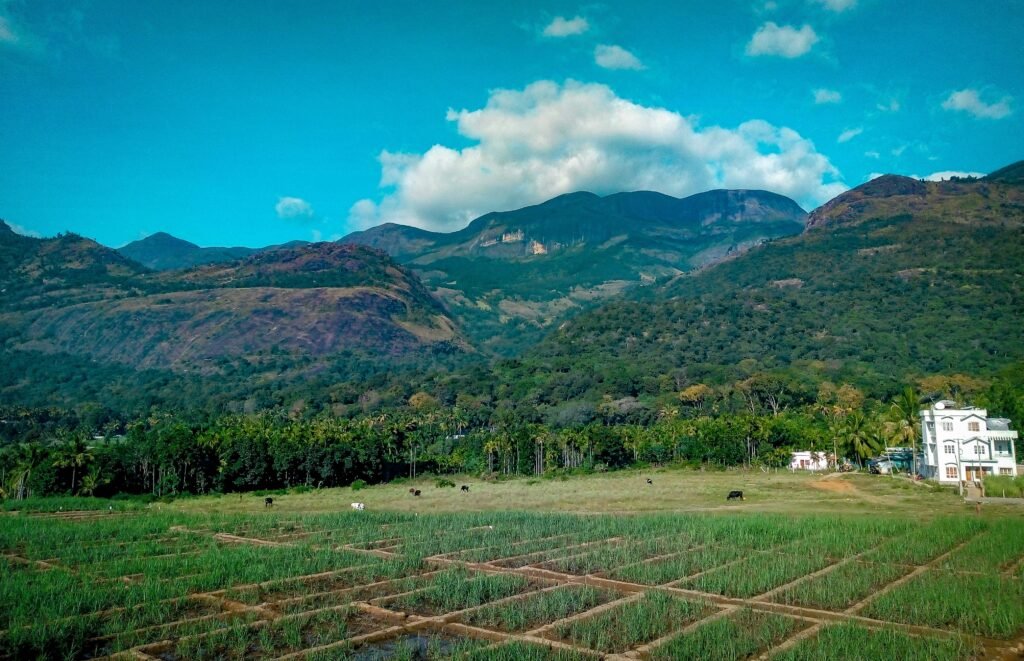🌱 Introduction
In 2025, organic farming in India has evolved from a niche movement to a mainstream agricultural model. With increasing demand for chemical-free produce, rising environmental awareness, and strong government backing, organic agriculture is now a profitable opportunity for Indian farmers.
Let’s explore the Top 5 Organic Farming Trends that are reshaping the Indian farming landscape in 2025 — from tech-powered cultivation to global market expansion.
✅ 1️⃣ Rise of Natural Inputs & Desi Practices
Trend: Farmers are moving away from synthetic fertilizers and pesticides.
Popular Practices:
Jeevamrut, Beejamrut, Panchagavya (cow-based formulations).
Use of neem oil, compost, and green manure.
Why it matters: Boosts soil fertility, reduces cost, and aligns with Zero Budget Natural Farming (ZBNF) philosophy.


✅ 2️⃣ Smart Technology in Organic Farming
Trend: Tech meets tradition with smart tools entering organic farms.
Popular Technologies:
IoT-based irrigation systems for water saving.
Drones for crop monitoring & pest control.
AI-powered soil health analysis apps.
Impact: Increases efficiency, reduces manual labor, improves crop health monitoring.
✅ 3️⃣ Surge in Organic Food Demand – Domestic & Export
Trend: Indian organic products are gaining trust among health-conscious consumers.
Growth Factors:
Urban consumers shifting to chemical-free diets.
Export demand for organic turmeric, basmati, ginger, and herbs.
Support: APEDA, FSSAI, and state-level organic missions provide certification and market access.


✅ 4️⃣ Organic Farmer Producer Organizations (FPOs)
Trend: Rise in Organic FPOs that help farmers:
Get certification
Aggregate produce
Access better markets and pricing
Example: National Centre of Organic Farming (NCOF) promoting organic clusters.
Impact: Better income, more bargaining power, and reduction in marketing costs.
✅ 5️⃣ Government Incentives & State-Wise Missions
Trend: Organic farming is now backed by subsidies and financial incentives.
Key Programs:
Paramparagat Krishi Vikas Yojana (PKVY)
Mission Organic Value Chain Development for NE Region
State schemes in Sikkim, Uttarakhand, Rajasthan, and Kerala.
Incentives: ₹20,000 per hectare for organic input management, certification support, and organic branding.

📊 Quick Trend Overview
| Trend | What It Means for Farmers |
|---|---|
| Natural Inputs Rise | Reduced costs & healthier soil |
| Smart Tech Integration | Efficient farm management & higher yield |
| Growing Market Demand | Better pricing in India & abroad |
| Rise of FPOs & Cooperatives | Collective power, easy certification, bulk selling |
| Government Schemes | Subsidies, training, and branding support |
✅ How to Start Organic Farming in 2025
If you’re a farmer looking to start organic agriculture in India, follow these steps:
Get training at your nearest Krishi Vigyan Kendra (KVK) or online course.
Apply for PKVY or your state’s organic scheme.
Use desi cow-based inputs and prepare compost/vermicompost.
Join an Organic FPO or cooperative.
Get NPOP or PGS certification to sell in premium markets.
📝 Conclusion
Organic farming in India is no longer a dream — it’s the future of sustainable agriculture. In 2025, these top organic farming trends will define the way forward: combining eco-friendly practices, modern technology, and strong market demand.
Whether you’re a small farmer or an agri-entrepreneur, this is the perfect time to go organic — for better health, soil, income, and the planet.
